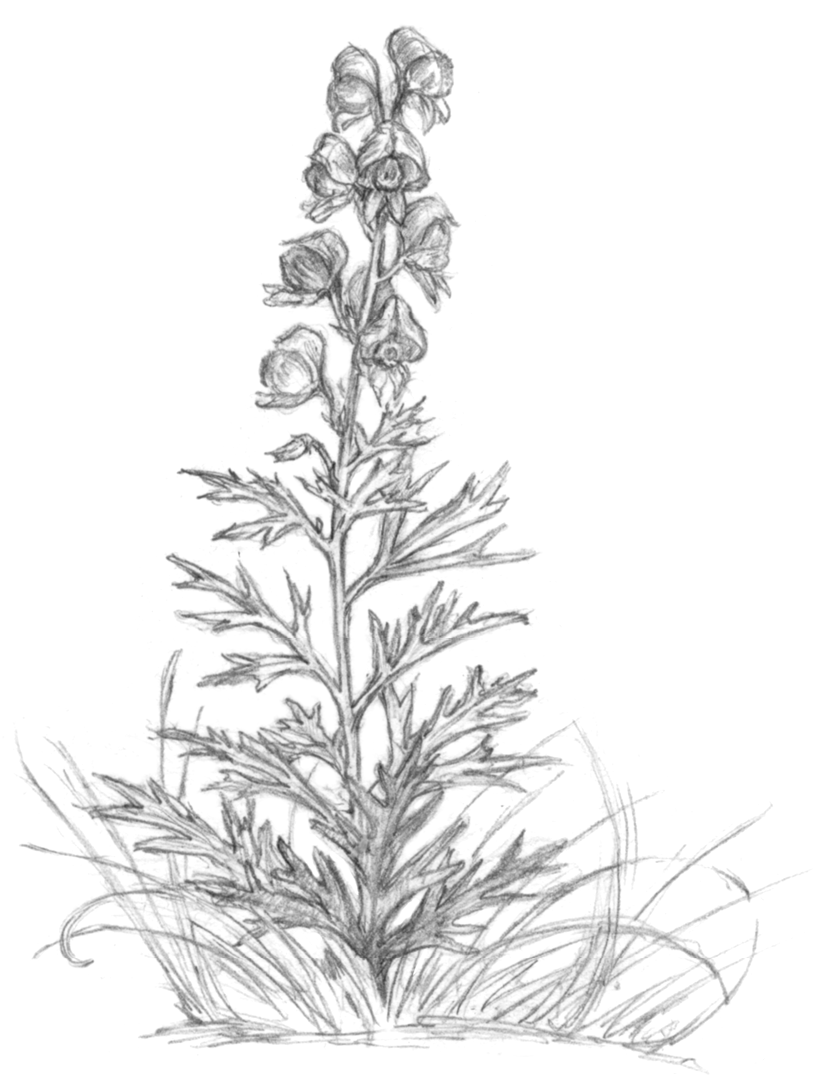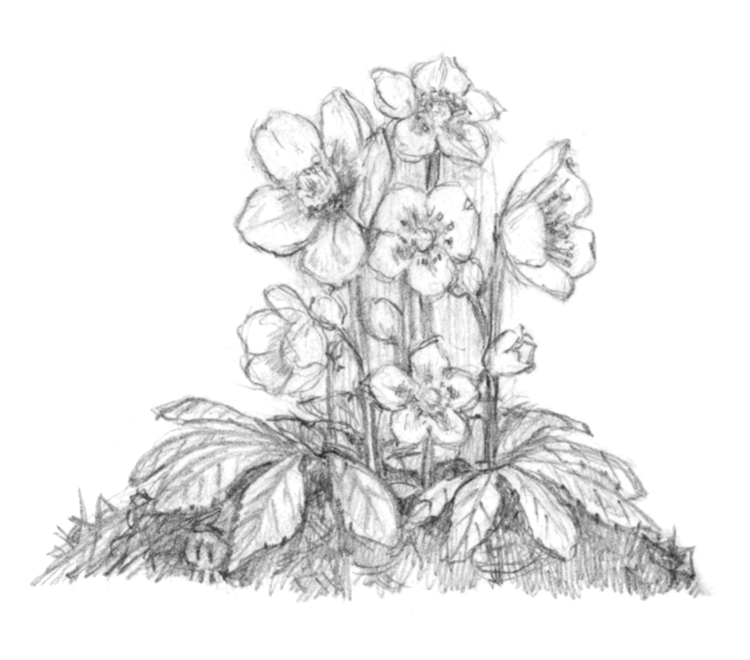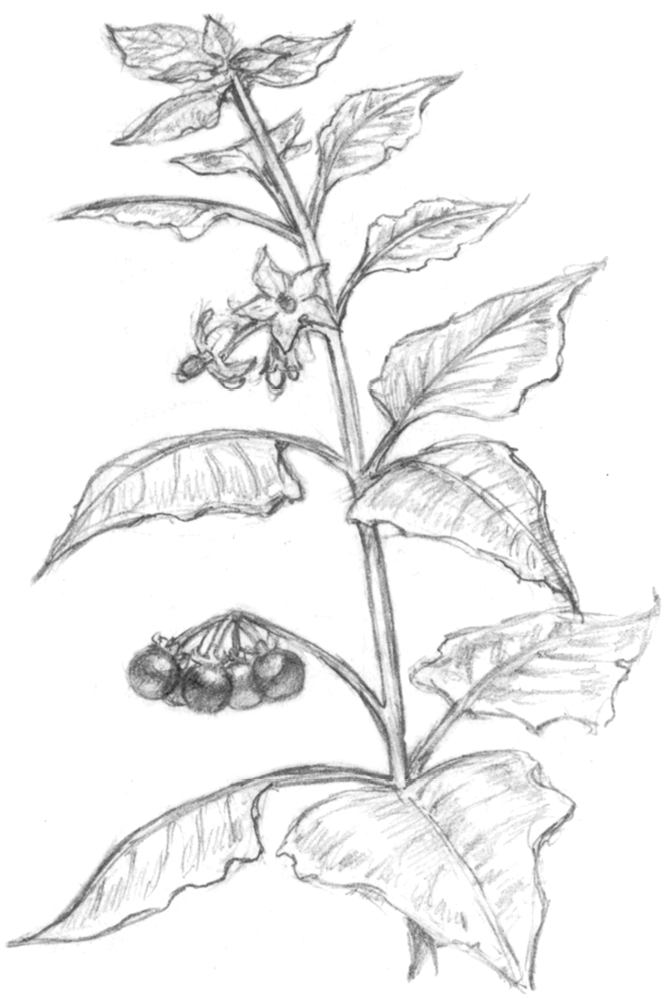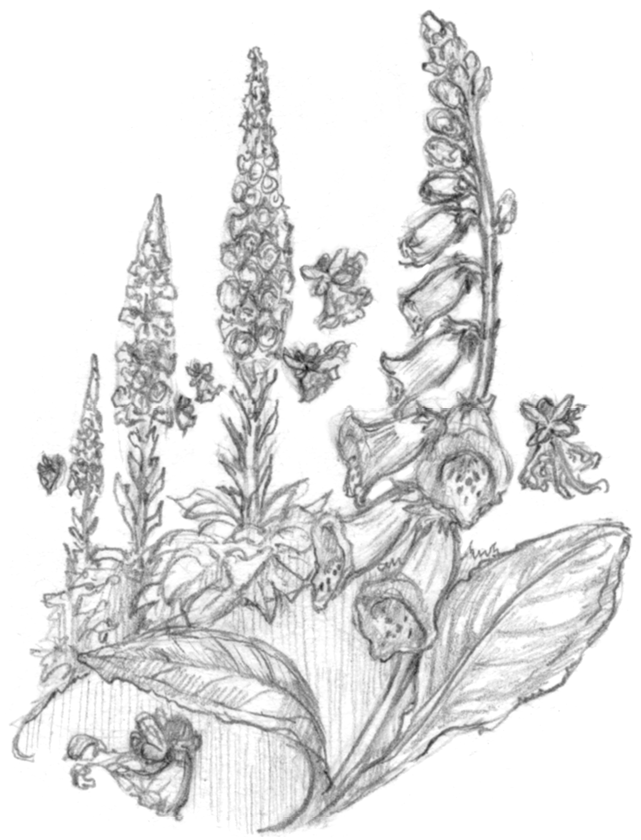Garden Witch's Herbal (21 page)
Read Garden Witch's Herbal Online
Authors: Ellen Dugan
Tags: #witchcraft, #wicca, #spells, #herb, #herbal, #herbalism, #garden, #gardening, #magical herbs, #herb gardening, #plants, #Pagan garden, #nature, #natural, #natural magick, #natural magic
I waved as he pulled out of the parking lot, and the two brothers walked up behind me. The oldest brother dropped his hands on my shoulders. “Are you okay?”
I looked over my shoulder at him. “Why wouldn't I be?”
“I watched in case there was trouble,” he said.
Now there was a sobering thought, the special forces guy ready for trouble. “I'm fine. Don't worry.” I patted his hand and moved away.
“You know,” the oldest brother looked me over speculatively, “I knew you knew a lot about plants, but I had no idea you had all that kind of information running around in your head. Are all Witches like that?”
I only smiled.
“Remind me not to piss you off or ask you to make me a salad,” the younger brother teased.
The interesting part of this story is that I had just been contracted to write a
2001 Magical Almanac
article on a Witch's garden, and I had been putting together ideas for a book on practical garden magick and herbalism. That autumn, I began my Master Gardener training program and took the next few years working at different nurseries in the summer to get more hands-on landscaping and plant experience. I submitted the manuscript for my first book,
Garden Witchery
, a few years later.
So fast forward to the present day some nine years and ten books later, and we find the Garden Witch writing on the topic of baneful herbs. Right on cue, my black cat has jumped onto the writing desk and has begun to purr. She just leaned in and gave me a kitty kiss on the nose, which is unusual for this cat. The only time she is affectionate is if you open up canned cat food or let her outside to romp in the catnip. Hmmm, I suppose she approves.
Read the following botanical information very carefully. You will see that according to old plant lore, many of these baneful herbs have common names and titles that are the same. There are a few mandrakes; likewise, there is a nightshade that is known as belladonna and a nightshade that is not, which was new information to me. I suppose you
can
teach an old Garden Witch a new trick. Also, I guess this means that that kid could have had six herbs on his list after all.
The folk names, or common names, are there for the information, not for plant identification. Always use botanical names, which are listed in italics, for proper plant identification. Please use your common sense if you decide to work with these botanicals. Be smart and safe and keep these herbs well out of reach from children. Also, you should never use cooking utensils, pots, bowls, or dishes to work with or to store these herbsâthey should have their own dedicated equipment. Should you decide to store any of these botanicals, clearly label these herbs as toxic and list the botanical name as well as the common name.
Always wash your hands carefully after handling any of these botanicals. Finally, there is no room for mistakes with any of these baneful herbs. For no reason whatsoever should any of these be taken internally. The consequences are deadly.
Thirteen Gothic Herbs
of Lore and Legend
Double, double, toil and trouble
Fire burn, and cauldron bubble.
shakespeare,
macbeth


aconite
Aconite (
Aconite napellus
)
Also known as monkshood and wolfsbane; some other folk names include blue rocket, friar's cap, and Venus's chariot. As stated earlier, many classically gothic poisonous plants have the same common names; this is why botanical names are crucial for identification. Among the deadliest of plants, aconite is a hardy perennial that is a native of Europe and Asia, and it thrives in shady areas. Aconite produces tall stems of up to five feet in height and bears beautiful, purple-helmeted flowers in the early summer. The herb has delphinium-looking foliage. This plant is inexorably linked with Witchcraft, magick, and poison gardens. The tales of the dangers of aconite are prevalent in old herbals.
In the language of flowers, monkshood has the definition of deceit and warns that a deadly foe is near. (I think that deadly foe may be the plant itself.) Magickally, this herb will grant invisibility and protection from werewolves and vampires. This plant is sacred to Hecate; it is also supposed to cure lycanthropy. Astrological associations for this feminine herb are the planet Saturn and the element of water.
To give you an idea of just how deadly this herb is, in the dark times, aconite was an arrowtip poison used to kill wolves. It was also a “death drink” given to condemned prisoners.
Warning:
This plant is subject to legal restrictions in some countries. Do not take internally or wipe any part of the plant on the skin. The plant will cause skin irritation, and even skin-to-plant contact can be dangerous. Always handle with gloves. All parts of this plant are exceptionally toxic.

black hellebore
Black Hellebore (
Helleborus niger
)
Also known as the Christmas rose, snow rose, or winter rose. This is a traditional cottage garden plant that blooms from late autumn to early spring. This winter-blooming plant often blossoms in the snow. This baneful herb grows up to fifteen inches tall and is part of the buttercup family (
Ranunculaceae
). It has evergreen compound leaves of seven or more leaflets, and it bears white flowers that age to pink. There are large-flowered cultivars available, as are pink-flowered and double-flowered varieties. Hellebore has become a popular early spring garden perennial these days. I saw it for sale everywhere in one-gallon containers this past April.
For practical magick use, I would grow this plant in the garden and enjoy the pretty flowers in late winter. Magickally, hellebore was thought to cure madness. Interestingly enough, in the language of flowers, it signifies a scandal. It is a feminine plant, sacred to Hecate and ruled by the planet Saturn. Its elemental association is water.
Warning:
This plant is an abortifacient; it is toxic and should not be ingested.

black nightshade
Black Nightshade (
Solanum nigrum
)
Also known as garden nightshade, black nightshade's folk names include hound's berry, small fruited nightshade, and poison berry. This plant is often called garden nightshade as it was often found growing wild, or volunteering, in the garden. A native plant of southern Europe, this variety of nightshade is an annual. The black nightshade has been introduced to the Americas and grows one to two feet in height. The plant has irregular toothed, oval, or heart-shaped and pointed leaves that are arranged on hairy stalks.
The black nightshade bears white flowers from midsummer to early fall that are arranged in clusters. The white flowers have five petals each and yellow anthers. The berries follow the flowers, and they begin as green and then ripen to a shiny black in the fall. All parts of this plant are considered toxic, the berries most of all. This plant is poisonous to both humans and animals. However, because the plant tastes bitter to animals, they typically will leave it alone.
Further along in this list, you will see a second variety of nightshade: the deadly nightshade
Atropa belladonna
, which is simply known as belladonna. The differences between these two types of nightshade are many, most notably in the flowers. The black nightshade (
Solanum nigrum
) has white flowers arranged in clusters. This plant has smaller berries, borne again in clusters, and is a shorter annual plant reaching only one to two feet in height, while deadly nightshade (
Atropa belladonna
) has purple, trumpet-shaped flowers borne singularly. The deadly nightshade is a herbaceous perennial and can grow up to five feet in height. The berries of deadly nightshade are described as large and looking like black cherries.
In the language of flowers, black nightshade warns of false and dark thoughts. Magickal uses are protection and defense magick. This plant is also sacred to Hecate. Black nightshade is associated with the planet Saturn and is linked to the element of water.
Warning:
All parts of this plant are toxic. Use extreme caution handling this plant. Do not ingest.

common foxglove
Common Foxglove (
Digitalis purpurea
)
Folk names include fairy's gloves, folks' gloves, fairy weed, bloody man's fingers, Witches' gloves, and Witches' thimbles. A classic faerie plant that is popular in gardening and landscaping, many people have no idea that it is a toxic plant. This is another plant that you may want to avoid if you have small children. Digitalis is used as a drug for heart failure. The foxglove leaves contain glycosides, which are used as a heart stimulant. The foxglove is classified as a biennial and can grow up to three feet in height. There are also a few other varieties of perennial foxglove. The foxglove blooms in the late springâearly summer from the bottom of the flower stalk up toward the top. There are white- and purple-blooming varieties of common foxglove.
In the language of flowers, foxglove warns of insincerity and fickleness, and cautions that “your love is as changeable as the breeze.” Magickally, foxglove may be used for faerie spells, deflecting negative magick, and defense. If you grow it in your magickal gardens, it will protect your home and property. It also encourages the faeries to live in your magickal gardens. This feminine herb is ruled by the planet Venus and claims the elemental association of water.